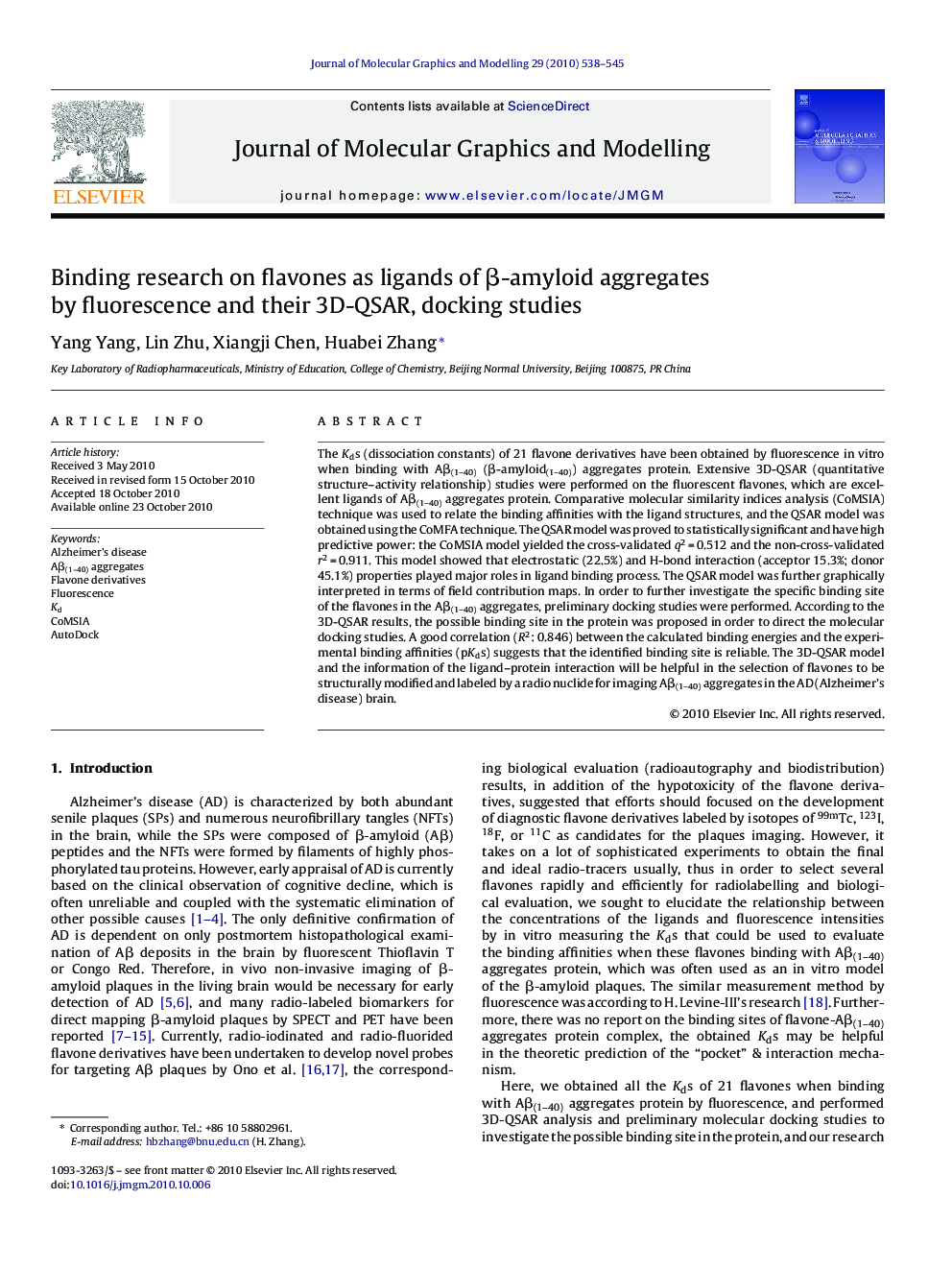| کد مقاله | کد نشریه | سال انتشار | مقاله انگلیسی | نسخه تمام متن |
|---|---|---|---|---|
| 443501 | 692729 | 2010 | 8 صفحه PDF | دانلود رایگان |

The Kds (dissociation constants) of 21 flavone derivatives have been obtained by fluorescence in vitro when binding with Aβ(1–40) (β-amyloid(1–40)) aggregates protein. Extensive 3D-QSAR (quantitative structure–activity relationship) studies were performed on the fluorescent flavones, which are excellent ligands of Aβ(1–40) aggregates protein. Comparative molecular similarity indices analysis (CoMSIA) technique was used to relate the binding affinities with the ligand structures, and the QSAR model was obtained using the CoMFA technique. The QSAR model was proved to statistically significant and have high predictive power: the CoMSIA model yielded the cross-validated q2 = 0.512 and the non-cross-validated r2 = 0.911. This model showed that electrostatic (22.5%) and H-bond interaction (acceptor 15.3%; donor 45.1%) properties played major roles in ligand binding process. The QSAR model was further graphically interpreted in terms of field contribution maps. In order to further investigate the specific binding site of the flavones in the Aβ(1–40) aggregates, preliminary docking studies were performed. According to the 3D-QSAR results, the possible binding site in the protein was proposed in order to direct the molecular docking studies. A good correlation (R2: 0.846) between the calculated binding energies and the experimental binding affinities (pKds) suggests that the identified binding site is reliable. The 3D-QSAR model and the information of the ligand–protein interaction will be helpful in the selection of flavones to be structurally modified and labeled by a radio nuclide for imaging Aβ(1–40) aggregates in the AD (Alzheimer's disease) brain.
Figure optionsDownload high-quality image (65 K)Download as PowerPoint slideResearch highlights▶ Binding affinities of flavones with β-amyloid aggregates were obtained by fluorescence. ▶ The CoMSIA model and the information of the ligand–protein interaction will be helpful in the selection of flavones to be structurally modified and labeled by a radio nuclide for imaging Aβ(1–40) aggregates in the AD brain.
Journal: Journal of Molecular Graphics and Modelling - Volume 29, Issue 4, December 2010, Pages 538–545